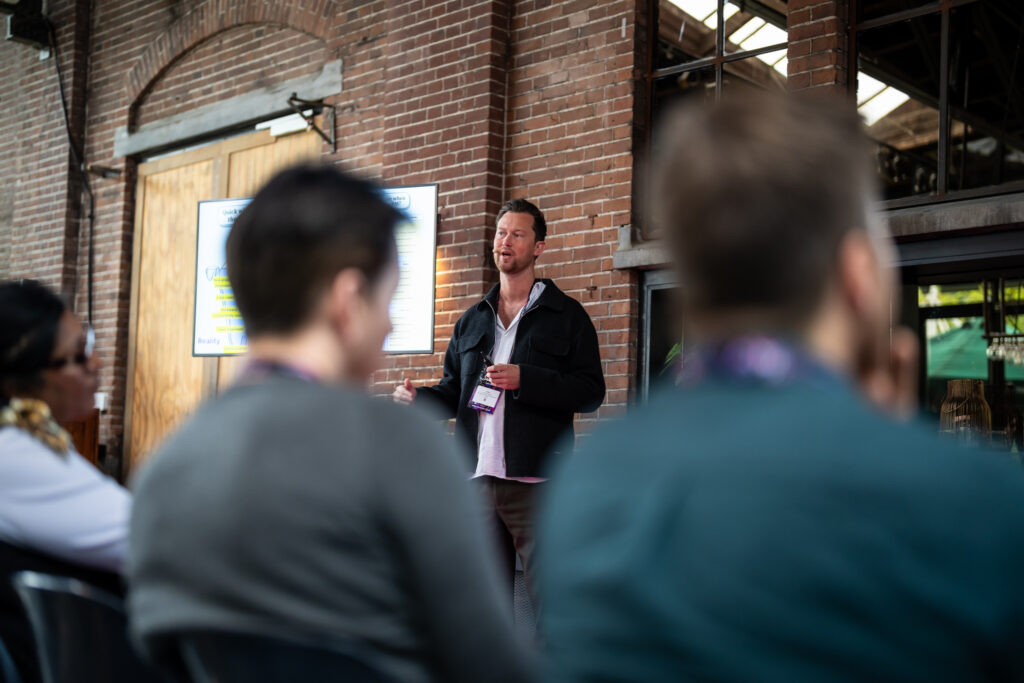
What if building a product was more like constructing a masterpiece meant to last centuries? Alleo’s co-founder and Head of Product & Partnership, Ruben van den Boogaard, recently shared a powerful perspective on this at SaaSiest Amsterdam, revealing the “Gaudí mindset” behind products that thrive today and stand the test of time. Comparing product development to the 144-year (and counting!) journey of Gaudí’s Sagrada Família, Ruben highlighted the patience, vision, and strategy needed to create enduring impact.
“Balancing the immediate wins with a long-term vision is essential,” Ruben explained. “The goal is to craft something that meets today’s needs and keeps evolving for tomorrow.” His approach offers a unique framework for aligning quick results with larger ambitions, essential in tech’s rapidly shifting landscape.
Core responsibilities and strategic growth paths
Ruben discussed the main responsibilities of product teams as twofold: achieving “quick wins” to engage customers immediately and developing a strong, future-focused strategy. Both paths can be strategically pursued through horizontal and vertical growth:
- Horizontal growth (e.g., Nvidia): Building upon existing products to expand reach, customer engagement, and market share.
- Vertical growth (e.g., OpenAI): Focusing on innovations and solutions that may not generate immediate revenue but address complex, future challenges.
Each approach has distinct implications. Horizontal growth emphasizes sustained user engagement, while vertical growth demands a visionary mindset and long-term backing. Ruben noted, “Your roadmap is a reflection of your strategy, whether you’re optimizing current offerings or pushing the envelope.”
The impact of quick wins
While immediate wins can boost customer satisfaction, over-prioritizing them can risk derailing the long-term product vision. Quick wins are valuable, but not at the expense of our product’s core mission. Ensuring that these short-term gains align with the overarching goals of the company is essential for sustainable growth.
Three key decision sources
Product teams, he noted, often navigate a range of decision influences. Here are three crucial sources guiding product decisions:
- KPIs: Every decision should map directly to key performance indicators tied to company goals.
- Product vision: The vision should provide context and direction, creating a north star for product teams.
- Company dynamics: Understanding the company’s broader environment, including market competition and internal changes, is crucial.
When these three forces work together, they create a solid foundation for making informed, strategic decisions that keep the product relevant and ready for future challenges.
Roadmap misconceptions and the journey to product maturity
Ruben addressed a common misconception in product development: the expectation of immediate impact following a new release. Roadmaps should be viewed as ongoing initiatives rather than instant-impact schedules. He shared, “True impact takes time, iterations and continuous improvements post-launch are often necessary to realize a feature’s full potential.”
The three pillars of product success
There are three main pillars necessary for product success:
- Vision: A compelling, unique perspective that differentiates the company.
- Operational excellence: Scalable infrastructure that can adapt as the product grows.
- Customer feedback: Implementing customer insights to continuously evolve the product, adding immediate horizontal value.
“These pillars serve as our compass,” Ruben explained, “helping us stay focused on what truly matters.”
Guiding principles for product decision-making
Building a product that stands the test of time isn’t about rushing to the finish line; it’s about laying down a solid foundation that can support growth, evolution, and even some unexpected challenges along the way. Ruben points out three key pillars that make this all possible:
- Product vision: Keep the broader goal in focus.
- Meaningful metrics: Ensure each decision aligns with C-level objectives.
- Internal and external dynamics: Remain responsive to internal shifts and market trends.
- Capability builders: Identify integrations that unlock potential growth.
- Customer-centric value: Regularly address user requests to enhance satisfaction.
When you balance them, you’re not just creating a product; you’re crafting something that has staying power in a constantly shifting world.
Case in point: Alleo’s growth strategy
Alleo’s journey, from a small start-up to a product with over 100,000 users, serves as a case study of Ruben’s framework in action. Initially, Alleo focused on solving specific customer pain points, such as payroll integration, to build user trust while gradually aligning these efforts with a long-term vision. This strategic alignment enabled the team to build a scalable HR solution that both served current customers and prepared for future growth.
Ruben concluded with a perspective that encapsulates the balance necessary for long-term product success: “Product development is like building a cathedral. It’s not about the fastest route, it’s about creating something that can stand the test of time.”